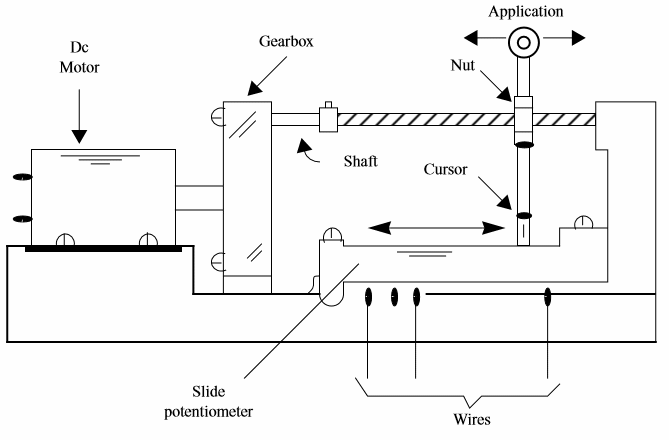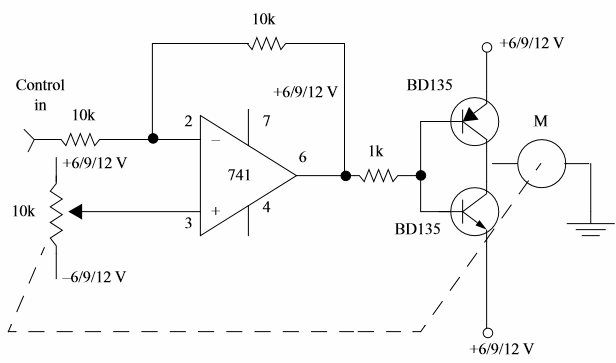The reader can build his own experimental servo using common parts. Figure 1 gives a simple project.

This servo is controled by a voltage instead pulses (we can adapt it to operate with pulses).
The circuit is shown by figure 2.

A gearbox is adapted to a worm screw that moves a nut. The nut is coupled to a slide potentiometer that gives the electric feedback to the circuit.
When you apply a voltage to the input of the circuit (signal) the motor moves until the potentiometer reaches the position where the feedback voltage is equal to the input voltage (zero output).
If you change the voltage in the input, the motor will be powered until the potentiometer reaches a new position where the output is zeroed.




